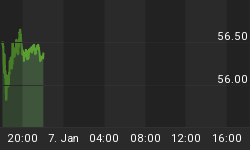The explosive surge in risk appetite following the earnings blowout from Goldman and Intel is posing serious threat to the validity of the Head-&-shoulder formations in the S&P500 and the Dow30 at the 8.600 and 930 levels, supporting the case for protracted rebound in equities and overall risk appetite. But Thursday's bigger than expected decline (first sub-500K reading in 4-week moving average in 5 months) failed to prolong the rise in stocks and bond yields. Unexpected deterioration in the July Philly Fed index to -7.5 from Junes -2.2 and news of an imminent CIT bankruptcy are preventing the positive impact from Jobless claims and JP Morgan earnings.

As spectacular as Wednesday's US rally appeared to be, equally notable was the lack of follow-through in the Thursday Asian session (+0.8% in Tokyo, flat in Bombay, -0.3% in Moscow and +0.6% in HK). The CIT news was the culprit. But also bear in mind that the VIX did close higher (first rise in 4 days) despite the S&P500s highest daily increase in 2 months. This may have been partially explained by the fact that the VIX had hit its lowest since September 10 and as equities neared key resistance levels, call buyers stayed on the defensive.
EURUSD did break above 1.4120 to 1.4165, now eyeing $1.4198 high-- 76% retracement of the $1.4338-$1.3744 decline. While the data are negative for both USD and JPY, USDJPY remains below 93.80s from earlier session high of 94.44.

GBPUSD follows on the back of overall USD-weakness, looking to test the $1.6520s, but its relative weakness to EURUSD cements EURGBP support at 0.8550 and renews prospects for regaining the 0.8630 resistance. USDJPYs rebound extended its post-91.70 predicted last week, but topped out at the 94.40s, which is the 50% retracement of the 96.97-91.78 decline.
Risk Appetite Probes Trend Line The charts below illustrate the risk-driven gains in AUDJPY and NZDJPY, currency pairs with consistently the highest positive correlation with equities (+0.7 year-to-date). Accordingly, these currency pairs, along with emerging market indices such as the Morgan Stanleys Emerging Markets index, are leading gauges of global risk appetite. Despite their falling trend lines, AUDJPY, NZDJPY and EM have yet to breaching above their resistance levels, signalled at 77.00, 62.00 and 770 respectively. Other pairs, such as AUDUSD, NZDUSD and GBPJPY remain capped at 0.81, 0.6520 and 155.70s respectively.

















